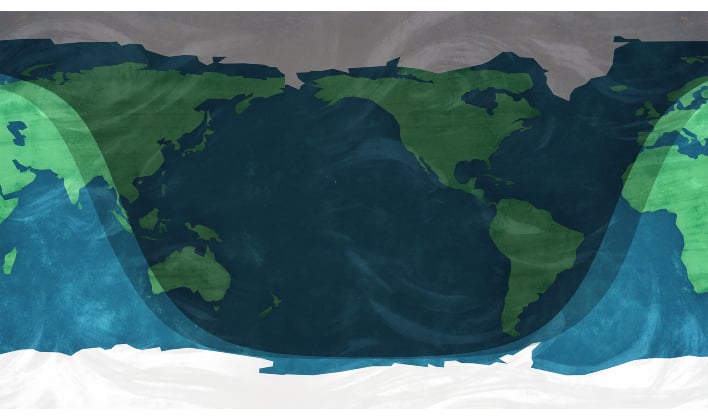Update: Program your coffee maker to brew a pot tonight because the longest partial lunar eclipse in nearly 600 years is afoot! Those on the East Coast who are willing to stay up late tonight will get a chance to see it beginning at 2am ET Friday morning, with it peaking at 4am. Those on the West Coast will be able to see it tonight starting at 11pm PT, with the peak coming at 1am PT Friday morning.
As a reminder, you don't need protective eye-wear like you would with a solar eclipse. However, you will benefit from going to an area with a clear view of the night sky free from obstructions and light pollution. Bundle up in warm clothes, bring some coffee in a thermos, and happy viewing!
Original Story: The upcoming partial lunar eclipse will be the longest of this century, and it will be able to be viewed in all 50 US states and a large part of the rest of the world. So, mark your calendars for November 18-19th and get ready to view the incredible eclipse.
A lunar eclipse is when the moon slips into Earth's shadow. A full eclipse means the entire moon is covered and a partial eclipse means the moon is not completely in Earth's shadow. This particular almost-total eclipse will be of the Micro Beaver Full Moon. It is named that because it occurs when the moon is at its farthest point from Earth and leads up the start of beaver-trapping season. There are going to be a total of 228 lunar eclipses this century, with this particular lunar eclipse said to be the longest.
With weather permitting, of course, the eclipse should be visible from any location where the moon appears above the horizon during the eclipse itself. Therefore, it will depend on where you are located in the world as to if it'll occur earlier or later in the evening for you. Those that are supposed to have a chance at viewing at least part of the eclipse include North and South America, Australia, the Pacific Region and Eastern Asia.

For those on the east of the United States, NASA offers up some
viewing tips for best best visibility, noting that the partial eclipse begins shortly after 2am ET, and reaching its height around 4am ET. So you will need to put on a pot of coffee if you are not a night owl. The time will be a bit kinder to those on the West Coast with it beginning just after 11pm PT,, with the height occurring at 1am PT (so you still might want a cup of java). In the map above, darker areas are where the partial eclipse will be most visible.
In addition to timing, we advise finding a viewing spot that is clear of obstructions. Not everyone lives by an open field, but plan ahead so you're not rushing to find the perfect spot when the time comes. Getting away from cloud cover is ideal, if at all possible, as is being in more remote areas away from bright lights (you're likely to have a better view in the country versus within city limits, depending on where you live). A pair of binoculars could enhance the experience, and of course dress for the temperature (it can be chilly at night this time of year).
As also pointed out by
NASA, "Partial lunar eclipses might not be as spectacular as total lunar eclipses - where the Moon is completely covered in Earth's shadow—but they occur more frequently. And that just means more opportunities to witness little changes in our solar system that sometimes occur right before our eyes."
So, don't worry if you happened to miss the total lunar eclipse in May of this year, or the upcoming partial eclipse because there will be many more opportunities to see one this century (just none longer than this one). And the next full lunar eclipse will occur between May 15th and 16th, 2022, followed by another one in November later in the year.
If you have wondered why the moon turns a reddish color during a lunar eclipse, it occurs because the light from the sun bends around Earth and travels through its atmosphere in order to reach the giant space rock (or maybe they're from the LEDs of
Wi-Fi routers on the moon). As it does so, Earth's atmosphere filters out shorter, bluer wavelengths of light permitting red and orange wavelengths through. Those red and orange wavelengths then continue on to the surface of the moon giving it its glowing red appearance.
Hopefully the weather will cooperate with anyone that is able to view the upcoming partial lunar eclipse, giving you the best view of this incredible event in the night's sky. So, if you are looking forward to seeing it get your blankets and have your camera ready to capture it all.


